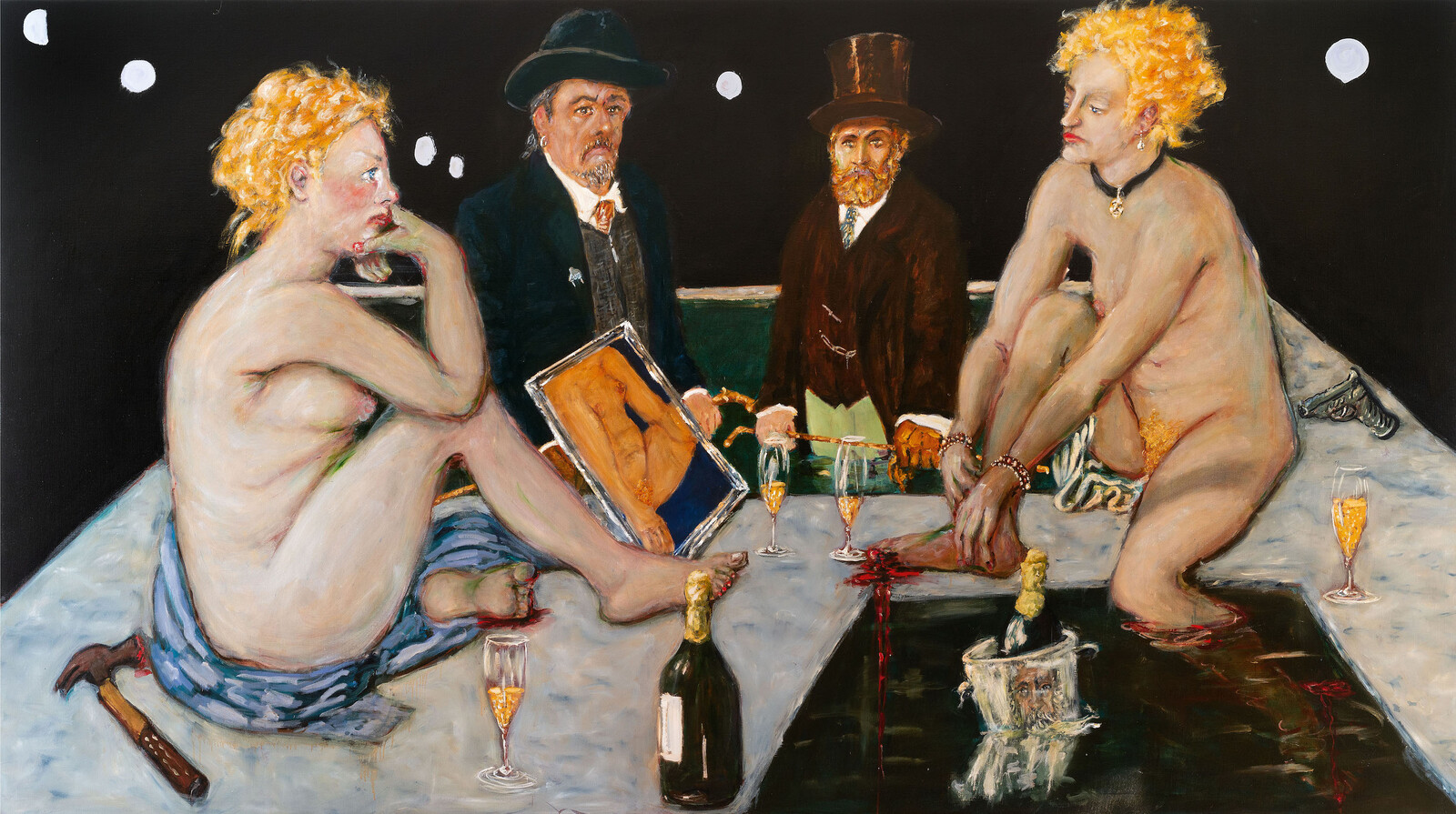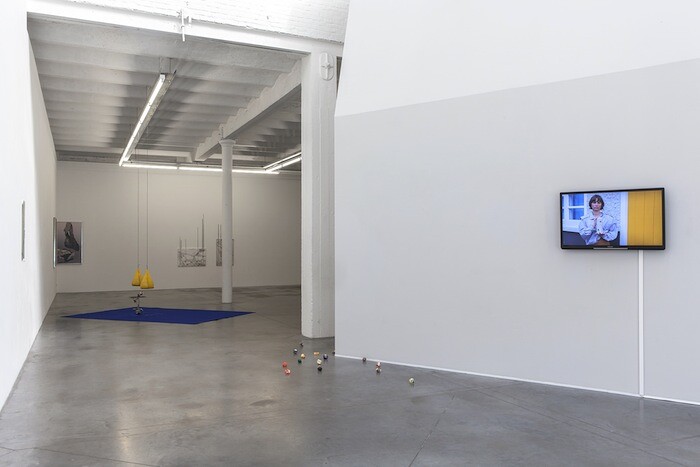Categories
Subjects
Authors
Artists
Venues
Locations
Calendar
Filter
Done
January 26, 2024 – Review
Jan Van Imschoot’s “The End Is Never Near”
Jörg Heiser

Belgian painter Jan Van Imschoot’s first major retrospective—the show that should gain him the belated international recognition his work deserves—spans four decades, seven rooms, more than eighty paintings, a bar, and a small cinema. And it starts with a landscape-format painting sitting smack across the entrance. A cherub or cupid, though with no wings, painted much larger than life, reclines against an indistinct, darkly looming background. The little big fellow has apparently nodded off, his nipples, shiny belly bottom, and tiny weenie standing out like bumps and craters on the surface of a full moon. The motif and the title Amore Dormiente (2018) pay direct homage to Caravaggio’s Sleeping Cupid (1608), a small painting at home in the Uffizi.
But homage immediately turns into, well, what? Parody? Grotesque exaggeration? In this adaptation, cupid’s face is wreathed by a shock of auburn hair, a rather adult skyward nose, sagging cheeks, and eyes swollen half-shut, like an old drunk’s. Instead of a bow and arrow in his left hand, in his right he holds a handwritten letter in French, signed by van Imschoot, which translates as: “Aposematism in painting: on linguistic confusions and the mimesis of lies, or the challenge of the …
November 2, 2015 – Review
“Listen to the Stones, Think Like a Mountain”
Mihnea Mircan

Stones have been “in” for quite some time: in recent years the “artist as archaeologist” has been rubbing shoulders—and comparing excavation gear—with the artist as geologist or speleologist, figures who have thus far received less scrutiny. Curated by Evelien Bracke, “Listen to the Stones, Think Like a Mountain” borrows the two halves of its title from the novelist Marguerite Yourcenar and environmentalist Aldo Leopold respectively, with polymath (and mineralogist) Roger Caillois as a tutelary figure. While Leopold’s injunction to “think like a mountain” does not echo in or between the works, the exhibition succeeds when it is closest to Yourcenar’s homage to Caillois, who taught her to hold the gaze of stones.
A series of juxtapositions in the show capture a paradoxical relation to stones, which are both obstacles to thought—by the unthinkable expanses of time they conjure—and conduits for reverie—disruptive or illuminating encounters with inertia or oblivion. Their uncanny photogeny and millennial indifference engenders a particular form of attention, a listening to the enigmatic shapes and temporal densities stones carry, a reciprocation of their murmured solicitation. For Caillois, the same lattices of meaning meander through the earth’s crust, insect behaviour, ritual or “primitive” belief: pebbles arrest this universal syntax—the “algebra, …